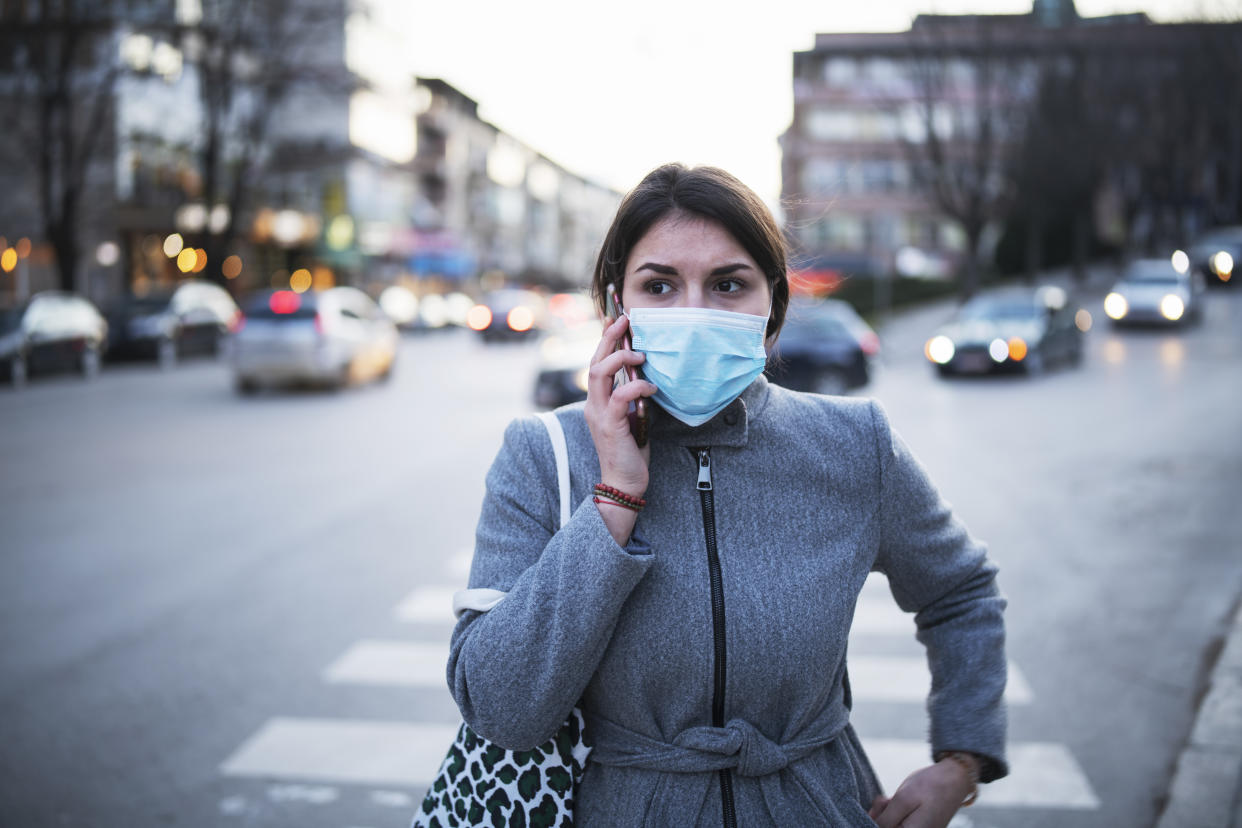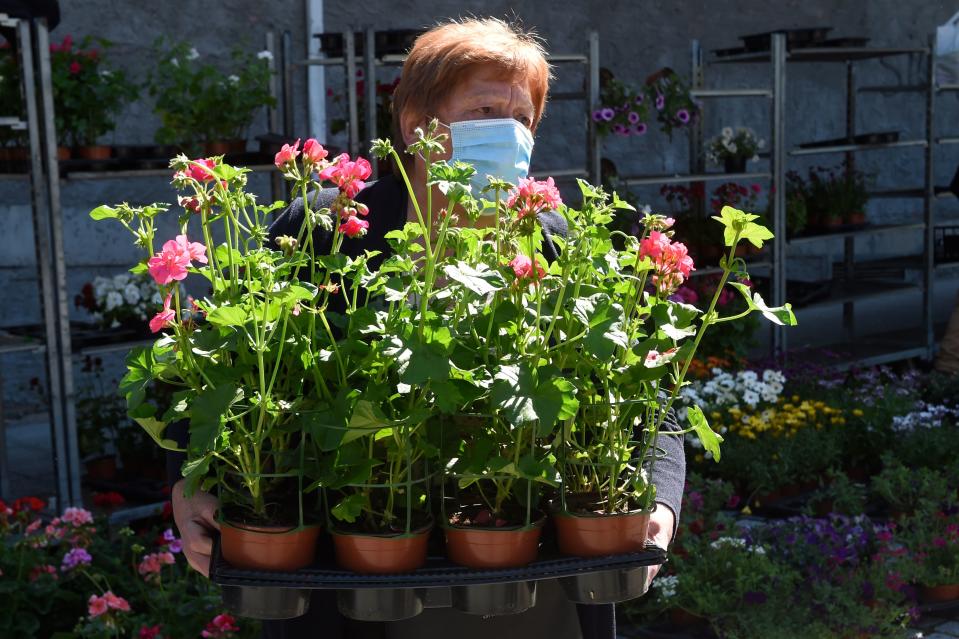Coronavirus questions answered: Symptoms, latest advice and how it compares with hay fever

The coronavirus outbreak is making headlines all over the world.
News of rising numbers of patients and deaths is leaving many people anxious that they may also catch the infection.
To help the public stay up-to-date on all they need to know, Yahoo UK has answered the most common coronavirus questions.
What is the coronavirus?
Coronaviruses are not new, but the ongoing outbreak is a new strain.
Strains are generally defined as subtype of a particular virus or bacteria, and other coronavirus strains can cause the common cold.
Severe acute respiratory syndrome (Sars) is also a coronavirus. It killed 774 people during its 2002/3 outbreak.
Another is Middle East respiratory syndrome (Mers), which killed 858 people in 2012.
The new strain – the COVID-19 virus – is thought to have come from a seafood and live animal market in the Chinese city of Wuhan, capital of Hubei province, at the end of 2019.
The market sold a range of dead and live animals, including chickens, hedgehogs, snakes and donkeys.
Most of those who initially became ill worked at, or visited, the market.
Close contact with animals may have caused the virus to “jump” into humans.
Some scientists believe the strain may have started in bats, before “jumping” into snakes or the scaly anteater pangolins, and then infecting humans.
What are the symptoms?
Four out of five people who catch the coronavirus have mild symptoms.
These include fever, cough and a loss to the sense of smell or taste.
Some have also complained of a runny or stuffy nose, as well as sneezing, slight breathlessness, fatigue and a sore throat.
Others develop diarrhoea and aches and pains.
Some patients have reported discolouration of their fingers and toes, as well as sore, pink eyes.
Headaches, nausea and vomiting are not common signs of the infection.
In severe cases, patients develop pneumonia.
This occurs when an infection of the airways spreads to the air sacs in the lungs, causing them to become inflamed and filled with fluid or pus.
Breathlessness is a common symptom of pneumonia, with some patients requiring hospital care.
How do coronavirus symptoms compare to hay fever?
Coughing is a common symptom of both the coronavirus and hay fever.
An allergy to pollen only sometimes triggers shortness of breath, however.
A raised temperature does not commonly occur with hay fever, despite its name.
Sneezing is a common symptom of hay fever, but only sometimes comes about with the coronavirus.
The coronavirus and hay fever both commonly cause fatigue and a loss of smell or taste.
Despite all their symptom similarities, the coronavirus and hay fever also have marked differences.
Aches and pains do not occur with hay fever, but are sometimes reported with the coronavirus.
Hay fever does not cause diarrhoea, whereas some coronavirus sufferers have complained of loose bowels. Research suggests the virus may spread in faeces.
Headaches are common during spring for those with hay fever, but do not generally occur in coronavirus patients.
Some people with the coronavirus develop a sore throat, which is uncommon with hay fever.
In reverse, a runny or stuffy nose is a common hay fever complaint, but not with the coronavirus.

What should I do if I think I have the coronavirus?
UK officials are urging people who develop the coronavirus’ tell-tale fever, cough or loss of smell or taste to self-isolate entirely at home for seven days.
Other members of their household must do the same for 14 days.
These individuals should avoid leaving the house even to buy “food or essentials”.
They may exercise if they keep a “safe distance”, two metres (6.5ft), from others.
Those who live alone and develop symptoms, even if mild, have been told to self-isolate for seven days.
People with suspected or confirmed coronavirus who live with others should stay in a different room and sleep alone, if possible.
They would also ideally use their own bathroom, and avoid pets and other animals.
Patients may need to see a doctor but should call ahead, letting them know they could have the coronavirus.
The medic can then take steps to prevent others catching the infection.
Government officials have also asked suspected patients to not call the non-emergency number NHS 111 if they have symptoms due to the service being under strain.
Information can be found on the NHS’ website and 111 online.
The government states you can call 111 if your symptoms worsen, or have not improved, during or after isolation. Those without internet access can also call.
In an emergency, dial 999, letting the operator known you may have the coronavirus.
If they have to be around others, patients should wear a mask.
Some find masks make breathing difficult. In this case, the people around the patient should wear masks when in the same room.
Patients should cough or sneeze into a tissue that immediately gets thrown away into its own bin bag.
These should be “double bagged”, tied securely and kept in the same room as the patient for at least 72 hours before being added to other household waste, which can be disposed of as normal.
Washing hands regularly with soap and water, or a sanitiser with at least 60% alcohol, is important to protect others from infection.
Hands should be washed for around 20 seconds, or the time it takes to sing Happy Birthday twice.
Do this after sneezing or coughing, before preparing or eating food, and after using the toilet.
It is also important not to share dishes, drinking glasses, cutlery, towels or bedding.
Bedding and “dirty” clothes can be washed as normal with other laundry items. Dirty laundry should not be “shook” as this may disperse the virus.
For those without a washing machine, wait a further 72 hours after a seven-day isolation before taking items to the laundrette.
Surfaces that are touched often – kitchen counters, doorknobs, phones and keyboards – should be disinfected regularly with a household cleaner.
What is the latest government advice?
The government is advising people to avoid infection by following the above instructions, particularly when it comes to hand-washing and social distancing.
People with serious underlying health issues – like severe asthmatics or blood-cancer patients – have been told to self-isolate entirely for three months.
For everyone else, officials are urging they avoid using the NHS unless they absolutely have to.
Most people who are becoming seriously ill are elderly or already have an illness.
If you know a vulnerable person, call them to check how they are feeling.
For those awaiting a non-emergency NHS operation, procedures in England will be postponed from 15 April for at least three months.
Even Britons not with suspected symptoms had been told to stay indoors, however, restrictions have recently been relaxed in England.
Those who cannot work from home are now “actively encouraged” to return to their job.
Workers should avoid public transport if possible due to difficulties with social distancing. Face coverings are mandatory on buses, trains and tubes in England.
People are permitted to meet up outside with six people from other households, providing they maintain social distancing.
Britons can also now take “unlimited exercise”, rather than being active just once a day.
People in England are also free to sit in parks and play outdoor sports with members of their household.
As part of the NHS’ test, trace and isolate system, anyone in England with coronavirus symptoms can request a test.
If positive, they are contacted and asked who they have spent more than 15 minutes with at a distance of less than two metres.
They are also asked who they have had sex with, live with and had face to face conversations with.
Contact details are then requested for the individuals the patient was close to between two days before, and up to seven days after, their symptoms emerged.
These individuals are asked to self-isolate for 14 days, regardless of whether they have symptoms.
Where can I get more information?
Rather than call NHS 111, check its website for more information.
The government has released “stay at home guidance” for those with a suspected or confirmed infection.
The NHS has more information on how the virus spreads, mainly via cough and sneezes.
Britons can also learn how the government plans to tackle the virus in its action plan.
Coronavirus: what happened today
Click here to sign up to the latest news, advice and information with our daily Catch-up newsletter
Read more about COVID-19
How to get a coronavirus test if you have symptoms
How easing of lockdown rules affects you
In pictures: How UK school classrooms could look in new normal
How public transport could look after lockdown
How our public spaces will change in the future
Help and advice
Read the full list of official FAQs here
10 tips from the NHS to help deal with anxiety
What to do if you think you have symptoms
How to get help if you've been furloughed




